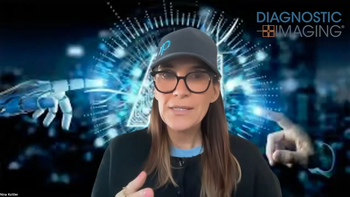
The Pavlovian Radiologist
Radiologists have a Pavlovian response to a ringing phone.
It's sometime between dusk and dawn. The radiologist is hard at work in his reading area, striving to provide quantity, quality and timeliness of image interpretations.
The phone rings. Or his pager (do people still use those things?) goes off. Or his instant message software pings. Somebody is demanding his attention.
An unwelcome interruption. Will his train of thought about the case he was reading get seamlessly back on track, or will some important consideration get lost in the shuffle? Will this issue be a quick matter or will it be half an hour before he's back at his worklist? Catecholamines trickle into his bloodstream, and his pulse, blood pressure and muscle tone slightly increase.
The interruption turns out to be some non-radiological doctor who wants to discuss a case. In the moment before the clinician is actually on the line and speaking, the radiologist's mind churns further: Is this inquiry something I’ll be able to answer confidently and accurately, or am I about to look inexpert? Is this clinician going to tell me I missed something important in a read? That my report was otherwise deficient in some way? Am I about to defend myself?
Stress-hormones increase in the circulation. Respiratory rate imperceptibly upticks. Pupils slightly dilate. Is the room a bit warmer than it was a second ago?
The moment of truth - the clinician gets on the line, and his purpose is revealed:
He’s not in the hospital, and can’t access reports himself, but did have a patient imaged and was wanting to make sure nothing needed his attention.
His patient hasn’t yet been imaged; he is prospectively seeking the radiologist’s opinion regarding the best modality or protocol for a clinical question.[[{"type":"media","view_mode":"media_crop","fid":"27719","attributes":{"alt":"","class":"media-image media-image-right","id":"media_crop_2729421138468","media_crop_h":"0","media_crop_image_style":"-1","media_crop_instance":"2734","media_crop_rotate":"0","media_crop_scale_h":"0","media_crop_scale_w":"0","media_crop_w":"0","media_crop_x":"0","media_crop_y":"0","style":"height: 126px; width: 150px; border-width: 0px; border-style: solid; margin: 1px; float: right;","title":" ","typeof":"foaf:Image"}}]]
He looked at a patient’s images, saw something intellectually stimulating to him (perhaps commonplace and humdrum to the experienced radiologist), and wanted to learn more about it.
The unknown stressor becomes a known quantity. Ninety-nine times out of 100, it is instantly defanged. The relieved radiologist, perhaps not even consciously aware of his brief internal neurochemical episode, proceeds to indulge in a brief, friendly shooting-of-the-breeze with the caller. Or perhaps his dissipating anxiety gets vented in a less cheery fashion, and he comes across as an unfriendly grouch if he hangs up a little too abruptly.
For those unhappy with their conditioned responses, Pavlov or the behaviorists following him might suggest literally sweetening the deal: Keep a bowl of candy next to the phone, and take one (PRN) every time those unwelcome stimuli present themselves. Perhaps one could then track increases in weight and dental caries as a PQI project.
Newsletter
Stay at the forefront of radiology with the Diagnostic Imaging newsletter, delivering the latest news, clinical insights, and imaging advancements for today’s radiologists.




























